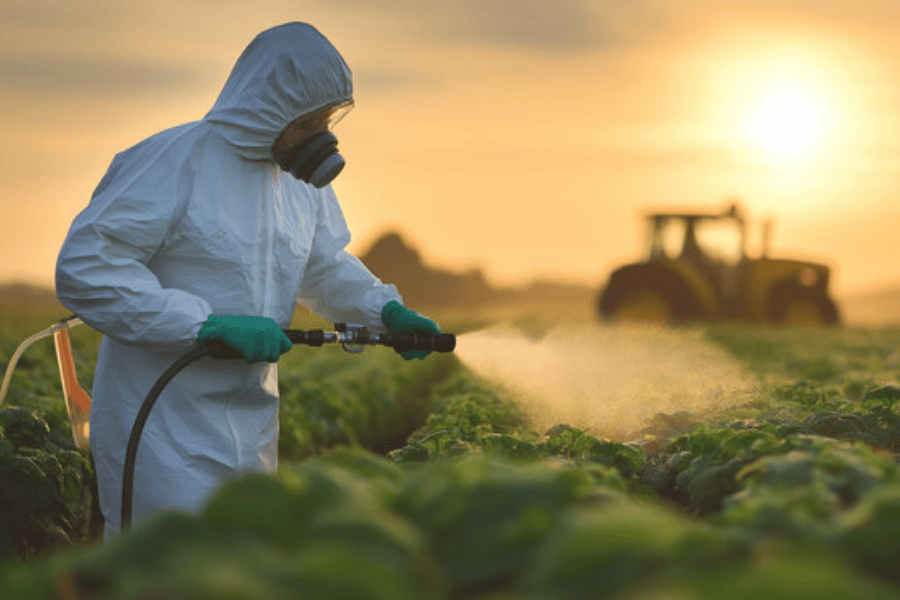Crop Solutions
Smart Solutions for Thriving Crops
From protection to growth enhancement, our range of products ensures sustainable and effective agricultural practices for modern farming needs.

Crop Solutions
Advantages of Crop Protection
Crop protection enhances agricultural productivity by preventing damage from pests, diseases, and weeds, ensuring higher yields and improved crop quality while supporting sustainable farming practices.
Long-term cost savings
Promote solutions for cost-effective farming practices.
Efficient pest management
Protects crops by effectively managing pest infestations.
Comprehensive disease prevention
Shields crops from harmful diseases for sustained growth.
Enhanced crop performance
Boosts overall crop health and quality for higher productivity.
Effective weed control
Keeps fields clear of weeds to ensure maximum yield.
Herbicides
Our herbicides offer precise weed control, protecting crops while preserving soil health. They ensure fields remain clean and productive.
- Broad-spectrum control for diverse weed species.
- Safe for crops with minimal residual effects on the soil.
- Help reduce competition for nutrients, water, and sunlight.


Fungicides
MaxxGro fungicides shield crops from fungal diseases, securing healthy growth and superior yield. They work effectively to prevent and treat infections.
- Effective against a wide range of fungal infections.
- Preventive and curative actions for comprehensive crop protection.
- Promote long-term crop health and quality.
Insecticides
Our insecticides deliver robust protection against pests, ensuring crop safety and reducing losses. They are effective and eco-conscious.
- Provide broad-spectrum pest control with long-lasting effects.
- Minimize damage while maintaining ecological balance.
- Ensure safe application with high efficiency and low residue.


Plant Growth Regulators (PGRs)
MaxxGro PGRs support crops by enhancing growth, flowering, and fruiting. They help plants thrive under stress, ensuring better productivity and quality.
- Enhance root and shoot growth for improved nutrient uptake.
- Optimize flowering and fruiting cycles for maximum yield.
- Reduce crop stress during adverse climatic conditions.
FAQs
Systemic Fungicide: Absorbed by the plant and moves within its tissues to provide internal protection.
Contact Fungicide: Remains on the surface and protects the plant by forming a barrier against fungi.
Pesticide Classification Based on Toxicity:
Highly toxic: Red label (Danger)
Moderately toxic: Yellow label (Warning)
Slightly toxic: Blue label (Caution)
Least toxic: Green label (Caution)
Pre-Emergence Herbicides: Applied before weeds germinate and emerge from the soil. They form a chemical barrier that prevents seedling establishment. Example: Pendimethalin, Atrazine.
Post-Emergence Herbicides: Applied after weeds have emerged and are actively growing. These can be selective (target specific weeds) or non-selective (kill all plants). Example: Glyphosate, 2,4-D.
The waiting period is the minimum time required between the last pesticide application and the harvest of the crop.
It ensures that pesticide residues degrade to safe levels before consumption.
Example: For some insecticides in vegetables, the waiting period may range from 3 to 15 days, while for systemic pesticides, it could be longer.
Acute Toxicity: Refers to the harmful effects of a pesticide after a single or short-term exposure. It is measured by LD50 (Lethal Dose 50%). Example: Immediate poisoning symptoms like nausea, dizziness, or respiratory distress.
Chronic Toxicity: Occurs due to long-term, repeated exposure to a pesticide, leading to serious health effects over time. Example: Cancer, neurological disorders, reproductive issues.
Translaminar Effect: When a pesticide penetrates the leaf surface and moves to the opposite side without systemic movement in the whole plant.
Translocation Process in Plants: Movement of water, nutrients, and organic substances within the plant through the xylem and phloem.
Importance of Irrigation Before Weedicide/Herbicide Application: Helps in better weed emergence, ensuring effective herbicide absorption and reducing crop stress.
